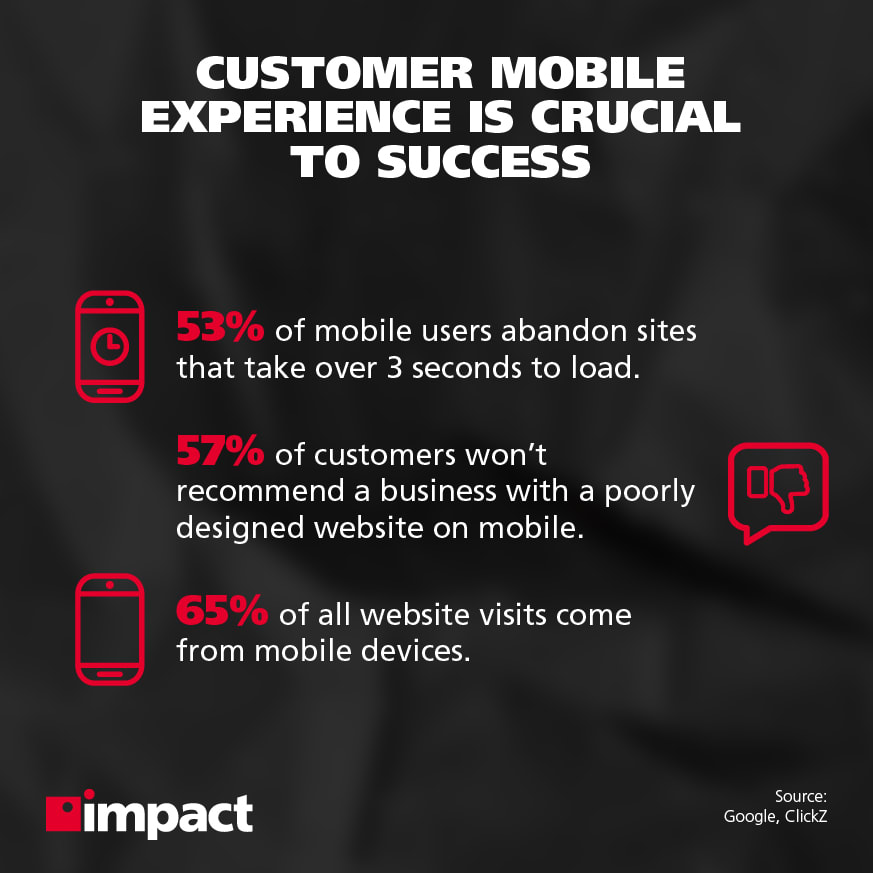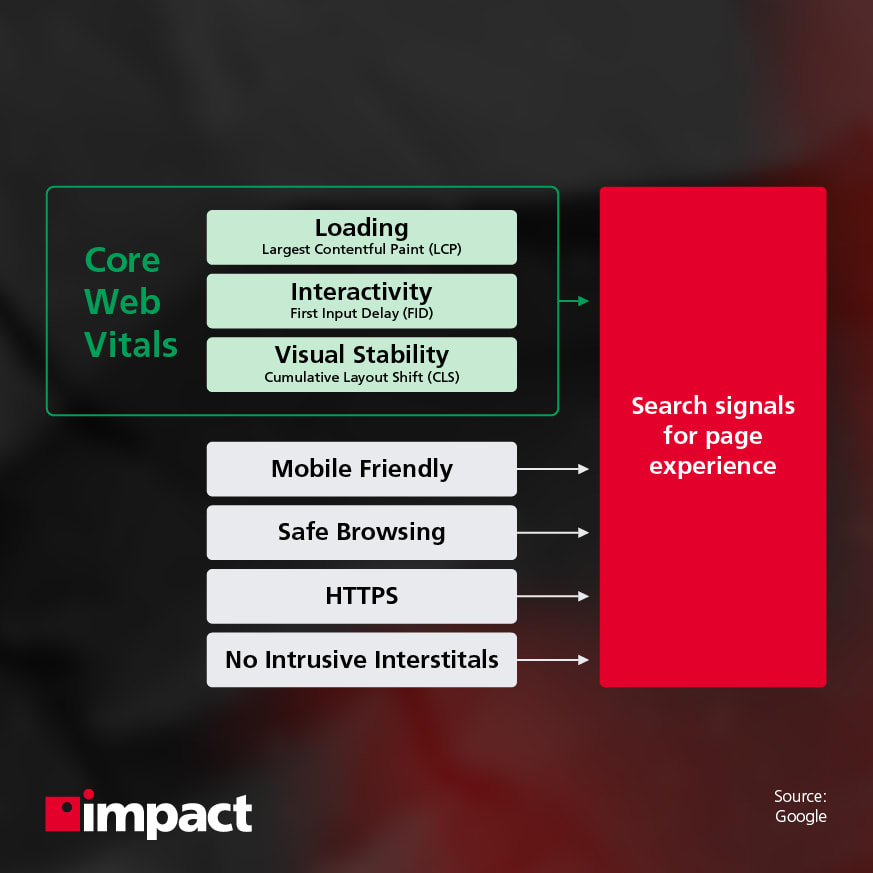Google has said that its new page experience algorithm, announced last May, will launch in May 2021.
The new algorithm sets out additional ways in which sites are ranked on its search results pages (SERPs), primarily around factors like loading speed, mobile-friendliness, and usability.
The resulting effect of this update will put a much larger emphasis on the ability of businesses to provide sites that run smoothly and quickly for users—those that don’t will see a negative impact on their search rankings and inbound marketing strategies as a whole as a consequence.
This is why SMBs must pay attention and prepare their sites for May 2021.
Why Page Experience?
Page experience, the encompassing philosophy behind the new update, comprises a number of metrics to determine how good the experience of a particular site is.
Google has been developing ways to ensure a smoother experience for users on its platform for a number of years now, chiefly as a way to rival Facebook’s Instant Articles.
This led to the creation of the AMP framework in 2015, which has been adopted and utilized by virtually every major news organization in the world. AMP provides a far quicker mobile loading experience and is indicated by a small lightening symbol in the upper-right of news pieces in SERPs.
The new page experience update is being developed with much the same thinking as AMP, only for websites as a whole—favoring those who deliver quick websites that are easy to use on mobile over older, non-mobile optimized sites.
In other words, owning a fast website that’s optimized for mobile will be a serious consideration when ranking for search terms, regardless of how well your site currently ranks on Google.
Doesn’t Google Already Do This?
Yes, they do, though in a less comprehensive way.
Google uses what it “page experience signals” to evaluate a website and give it a score.
Search signals (the specific indicators of a site that Google looks for) already include the following that affect search results:
- Mobile-friendly: Determines how mobile-friendly a site is; you can use this link to see whether your own is considered mobile-friendly
- Safe-browsing: Looks for any malicious material on a site page, like malware or any kind of social engineering
- HTTPS: The page is secured with HTTPS
- No intrusive interstitials: Interstitials are unexpected pages displayed before or after the page the user expected to land on—commonly used as a marketing strategy. Intrusive interstitials make the page less accessible for users.
Websites are already impacted in their search rankings by these factors, so if you’re looking at these with any trepidation, now is the time to make sure you have all these existing factors in place.
What Are Page Experience’s New Metrics?
The page experience update brings in three new metrics to further help determine rankings.
These are referred to as “Core Web Vitals”.
These vitals are hugely important, as they will be the metrics factored in come May.
The Core Web Vitals are:
- Loading: The time taken between when the page starts to load and when the largest image or block of text is rendered on-screen
- Interactivity: The time taken for the page to be ready to respond to user clicks
- Visual stability: The measured distance that the user viewport (what’s on screen) shifts due to loading elements on the page, like an image popping in and rearranging text while loading
Each of these metrics is graded by Google when assessing a site, the overall grades are:
- Good
- Needs improvement
- Fail
These Core Web Vitals are what are being incorporated into page ranking consideration, so if your site is judged to have fared poorly in any one of them, you can expect a negative influence on your rankings.
Google’s Lighthouse open-source tool can be used to assess the quality of these vitals already. Anyone who uses Chrome can use Lighthouse and take a look at how they or their competitors fare.
What Will the Update Mean for SMBs?
Google has been heading in the direction of mobile optimization for most of the 2010s and now it looks as though that trend will very much continue into this decade too.
The page experience update is setting in stone what we already knew—mobile is king and Google is doing everything it can to provide mobile users the best experience possible.
They’ve determined that in order to do this, page experience metrics must be factored into the ranking of websites, and so SMBs must be prepared for May 2021 and ensure that their sites are performing smoothly for users on all platforms.
But What About All My Great Content?
Google has been quick to try and assuage fears that websites that aren’t doing too well with its page experience metrics will be consigned to the internet trashcan when it comes to search results.
Gary Illyes, Webmaster Trends Analyst at Google, took to Reddit to say it’s unlikely that page experience signals would ever be the primary determinant when it comes to ranking content.
In other words, great content is great content and will still rank based on relevancy to the user.
However, under the new update, don’t be surprised to see content slipping down the rankings because of a poorly optimized site in favor of competitors with similar content and a smooth site—page experience is still a factor, and it will have an effect.
What Do I Do Now?
This new update will favor businesses that have already invested in a great website and those who already use a quick site with very few issues.
For those who are unsure about their site, the first thing to do would be to do a quick assessment of your site using Lighthouse to give you an indication of where you stand.
If your site is the worse for wear, consider bringing on a consultant who can take a deep dive into your site and put together a plan to bring it into line with what Google will be expecting of your website when the update hits May 2021.
Bottom Line
Google’s new page experience update is a big one, and they’ve effectively given businesses a six-month warning by announcing the launch date in November 2020.
The new update will incorporate new “signals” into Google’s algorithm for presenting search rankings to users, and these are all focused on user experience.
Sites that are quick to load, quick to use, and visually stable with have an advantage over competitors in getting to the top of Google, and as such website performance will not just be a desirable goal, but an essential one in order to be competitive.
SMBs must take a comprehensive approach to their site’s performance, and pay particular attention to mobile user performance.
Subscribe to our blog to receive more insights into business technology and stay up to date with marketing, cybersecurity, and other tech news and trends (don’t worry, we won’t pester you).

